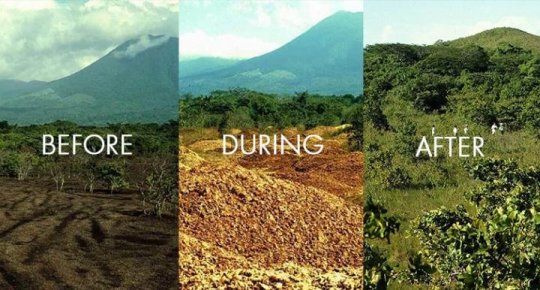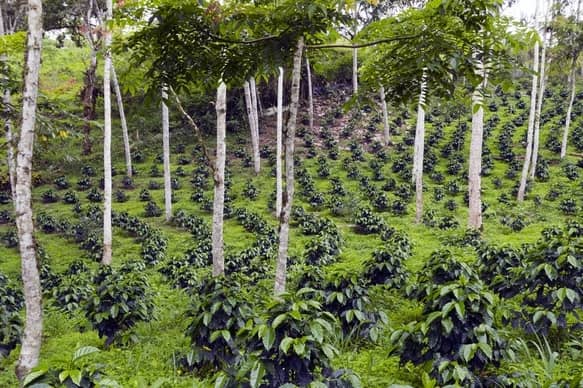Back to: AGRICULTURAL SCIENCE SS2
Welcome to Class !!
We are eager to have you join us !!
In today’s Agricultural Science class, We will be learning about Forest Management. We hope you enjoy the class!

CONTENT
- Meaning of forest
- Forest reserve in Nigeria
- Importance or uses of the forest
- Management of the forest
FOREST
Forest can be defined as a large area of land covered with trees and bushes, either growing wild or planted for some purposes which serve as habitat to various kinds of animals.
Forestry is the management of forest and forest resources.
Silviculture is the growing and cultivation trees.
Forest ecology is the scientific study of interrelated organisms in the forest.
COMMON FOREST TREES
Common forest trees found in the forest are Iroko, Obeche, Mahogany, Nigerian walnut, Ebony, Camwood, Opepe, Afara, Teak and Abura.
FOREST RESERVES IN NIGERIA
Forest reserves are large areas of land where plants, either growing naturally or planted are specially preserved for specific purposes.
SOME FOREST RESERVES IN NIGERIA
- Mamu River Forest Reserve in Anambra State.
- Omo Forest Reserve in Ogun State.
- Afi River Forest Reserve in Cross Rivers State.
- Okomu Forest Reserve in Edo State.
- Shasha River Forest Reserve in Ogun State.
- Zamfara Forest Reserve in Zamfara state.
- Sanga River Forest Reserve in Plateau state.
IMPORTANCE OF FOREST AND ITS RESOURCES
The following are ways in which the forest and its resources are important to us. They are as follows:
- Provision of food.
- Provision of fuel.
- Provision of medicinal herbs.
- Provision of employment (lumbering).
- Forest serves as a windbreak.
- Formation of rain.
- Prevention of soil erosion.
- Addition of nutrients to the soil.
- Home of wild animals.
- Forest serves as a tourist centre.
- Provision of foreign exchange.
- It beautifies the environment and serves as tourist sites.
- Reduction of atmospheric pollution.
- Sources of raw materials such as pulp, timber, dye, gum latex etc.
MANAGEMENT OF THE FOREST
The following are management practices that will ensure a constant supply of timber in the forest:
A) FOREST REGULATION:
These are laws promulgated by the government in the form of edicts, decrees and bye-laws to prevent people from exploiting or indiscriminate tapping of forest resources. eg:
- The prohibition of bush burning
- Ban on the indiscriminate cutting of timber trees
- Encouraging people to plant trees
- Ban or collection of leaves and firewood from the forest
- Ban or farming in forest reserves
- Ban or cutting down of under aged trees
- People are to obtain licences so as to secure permission to enable them to cut down trees for human needs.
B) SELECTIVE EXPLORATION
This is the process of cutting or harvesting only mature trees in the forest
ADVANTAGES OF SELECTIVE EXPLORATION
- It ensures the concentration of selected species of timber in the forest
- It protects soil from erosion
- It ensures a continuous supply of timber
- It serves as a revenue base for the government
- It prevents indiscriminate felling of timber
C) DEFORESTATION
This is the continuous or indiscriminate removal of trees without replacing them.

CAUSES OF DEFORESTATION
- Unfavourable climatic factors such as drought, wind blast etc
- Man’s farming activities such as bush burning, shifting cultivation etc.
- Timber exploitation
- Mining/industrialization
- Natural disasters
- Bad government policies
EFFECTS OF DEFORESTATION
- It encourages soil erosion.
- It leads to a reduction in soil fertility.
- It reduces the amount of rainfall in an area
- It reduces soil moisture content
- It increases the leaching of plant nutrient
- It destroys the microclimate and warms up the environment
- It may lead to desert encroachment
EVALUATION
- List five importance of forest
- Explain selective exploration
D) REGENERATION
Regeneration is the process of forest re-growth after it has been exploited. It is a deliberate effort to grow trees.

TYPES OF REGENERATION
- Natural Regeneration: in this type, there is regrowth of new plants from the old stump
- Artificial regeneration: this involves the planting of new forest seedlings in a deforested area.
ADVANTAGES OF NATURAL REGENERATION
- It is less expensive when compared with the artificial regeneration
- It does not require formal stages in plantation establishment
- It brings about the stabilization of the natural ecosystem
- It does not require special management skill
- AFORESTATION
This is the process of establishing forest plantations in any area.
ADVANTAGES OF AFORESTATION
- It leads to the addition of organic matter
- It provides a regular supply of raw materials e.g timber for industries
- It prevents desert encroachment
- It increases forest fauna (wildlife) in the area concerned
- It prevents leaching of plants nutrient
- It increases soil moisture retention
- It increases the amount of rainfall
- It improves the soil structure
- TAUNGYA SYSTEM
Taungya system is defined as the planting of arable crops at an early stage of forest establishment and the arable crops are harvested before the trees form canopies.

CONDITION NECESSARY FOR THE PRACTICE OF TAUNGYA SYSTEM
The conditions which may favour the practice of taungya system include:
- Scarcity of land
- Over population
- Unemployment
- Government policies
- A low standard of living
ADVANTAGES OF TAUNGYA FARMING
- Varieties of crops are harvested
- There is the availability of crop produce throughout the year
- When leguminous crops are used they fixed nitrogen to the soil
- Solves the problem of land scarcity
- It increases the income of the farmer
DISADVANTAGES OF TAUNGYA FARMING
- The reluctance in releasing fertile soil
- Cultivation of selected crops
- Competition between crops and trees
- The inability of some crops to survive
GENERAL EVALUATION
- Define Taungya farming
- List three advantages of Taungya farming
- What is regeneration?
- List the types of regeneration
- List the causes of deforestation
RESEARCH
Find out the botanical names of ten common forest trees.
READING ASSIGNMENT
Revision questions 6 and 7 in Essential Agricultural Science for Senior Secondary Schools chapter 23, page 228
SECTION A
- Define forest
- List ten uses of forest
- Define deforestation
- State five effect of deforestation
We have come to the end of this class. We do hope you enjoyed the class?
Should you have any further question, feel free to ask in the comment section below and trust us to respond as soon as possible.
In our next class, we will be learning about Floriculture. We are very much eager to meet you there.

Very educative, forestry is a course that lack man Power, this write up will go a long way in educating the pupil how important Forestry is.
Thanks I really appreciate this opportunity
Thank you very much
briefly explain the following;
edicts,
decrees, and
bye law